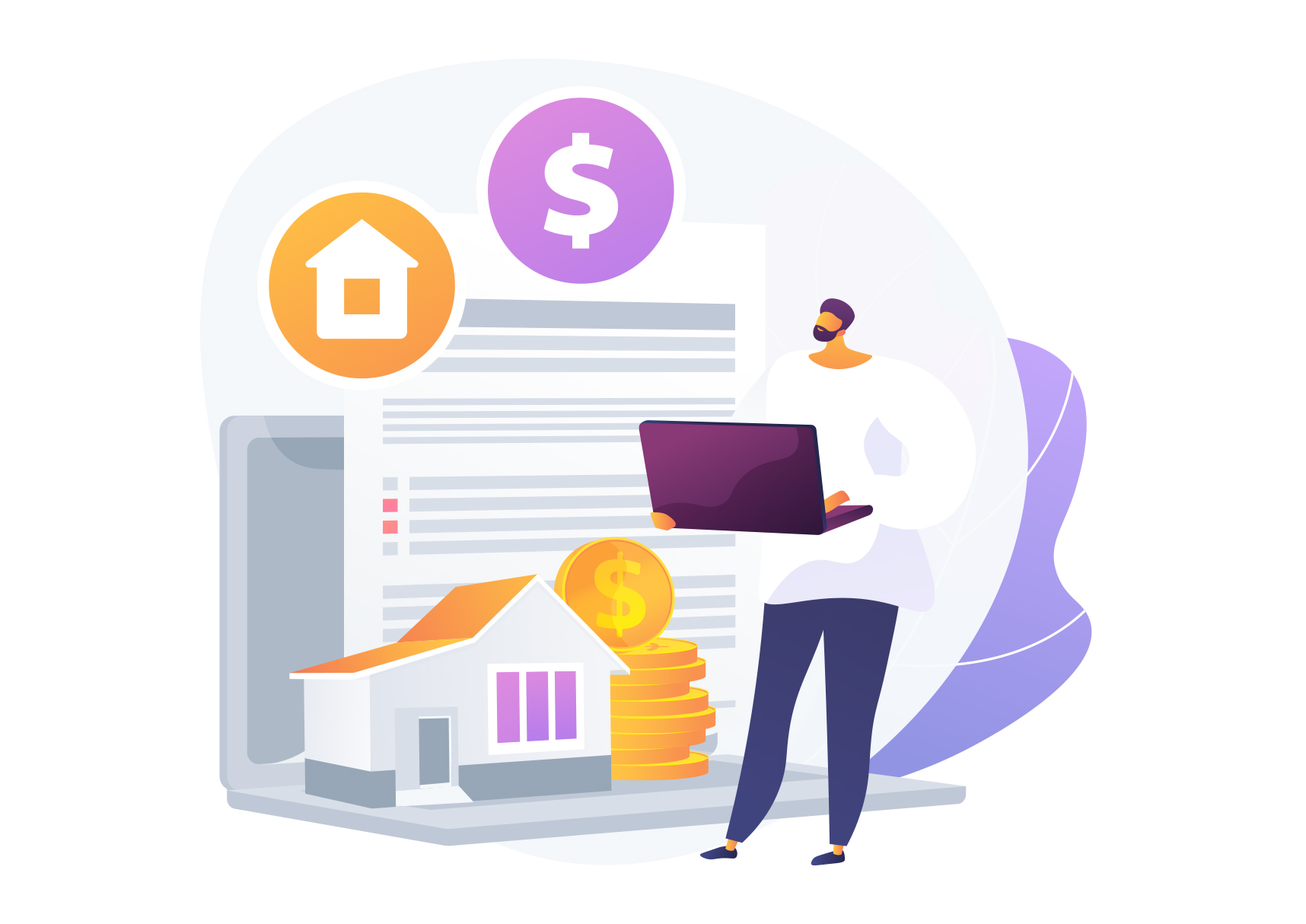Taxes on UK Buy-to-Let Properties 2024

Death and taxes—two inevitable aspects of life. For landlords and potential property investors in the UK, understanding the tax implications of buy-to-let properties is crucial for making the right investment decisions.
Whether you’re an individual landlord or an entity looking to expand your property portfolio, taxes will significantly impact your returns.
Here’s everything you need to know about the tax on buy-to-let for properties in 2024-2025.
Tax on Buy-to-Let in The UK: How is Buy to buy-to-let Property Taxed?
Understanding the taxation of buy-to-let properties in the UK in 2024 is crucial for potential property investors. So, what taxes should buy to let investors be aware of?
- Stamp Duty Land Tax (SDLT)
You pay SDLT on residential properties costing more than £250,000.
Rates are:
- 0% up to £250,000
- 5% on £250,001 to £925,000
- 10% on £925,001 to £1.5 million
- 12% on the portion above £1.5 million.
If you buy an additional residential property (e.g., a second home or buy-to-let), you pay a 3% surcharge on top of the standard rates. This surcharge applies if you already own another property.
Certain situations, such as purchasing properties under £40,000, mixed-use properties, or buying through specific trusts, may be exempt from the surcharge.
- Income Tax on Rental Income
Rental income is taxable and must be declared in your self-assessment tax return. For the 2024-25 tax year:
- The basic rate of 20% applies to income between £12,571 and £50,270
- The while the higher rate of 40% applies to income between £50,271 and £125,000
- The additional rate of 45% for income above £125,001.
Tax on buy to let income will depend on your circumstances.
- Capital Gains Tax (CGT)
When selling a buy-to-let property, capital gains tax is payable on the profit made. The CGT allowance has been reduced to £3,000 for the 2024-25 tax year, with rates at 18% for basic rate taxpayers and 28% for higher and additional rate taxpayers. This reduction in allowance means higher CGT bills for landlords.
What are the Changes to Buy to Let Taxes and Regulations 2024-2025?

Here are the main changes landlords should take note of going forward:
- Changes to Capital Gains Tax (CGT) Allowance
From April 2024, the CGT allowance is reduced to £3,000, down from £6,000. Additionally, the CGT rate for higher and additional rate taxpayers will decrease from 28% to 24%, which will affect the tax liabilities when selling a property.
- Stamp Duty Land Tax (SDLT)
The threshold for the higher 3% surcharge on additional properties remains, but the Multiple Dwellings Relief (MDR) will be abolished from June 2024. This means investors buying multiple properties in one transaction will no longer benefit from reduced SDLT rates.
- Furnished Holiday Lets
The tax benefits for furnished holiday lets will be scrapped from April 2025. This includes the removal of the ability to offset mortgage interest against profits and claim capital allowances, which previously provided significant tax advantages.
- Making Tax Digital (MTD)
The rollout of MTD for income tax has been delayed until April 2026 for landlords earning over £50,000 annually. Those earning between £30,000 and £50,000 will start using MTD from April 2027, with no set date yet for those earning less than £30,000
This extension provides landlords with additional time to adapt to the new digital requirements and ensure they have the necessary software and processes in place to comply with HMRC’s digital tax reporting system.
What are the Benefits of Using a Limited Company?
Tax on buy-to-let can be reduced by using a Limited Company. Profits are subject to Corporation Tax at 25%, which can be more tax-efficient for higher-rate taxpayers.
However, extracting profits as dividends or salaries can incur additional personal taxes, and transferring existing properties into a limited company can trigger other tax liabilities.
Benefits of Using a Limited Company for Buy-to-Let Rentals:
- Tax Efficiency
Profits from rental properties owned by a limited company are subject to Corporation Tax, which is lower than personal income tax rates. As of April 2024, Corporation Tax is set at 25% for profits over £250,000, compared to up to 45% for higher-rate individual taxpayers.
- Deductible Expenses
Limited companies can fully deduct mortgage interest costs as business expenses. This contrasts with individual landlords, who are restricted to claiming only a basic rate tax of 20% on mortgage interest payments.
- Inheritance Planning
Holding properties in a limited company can facilitate inheritance planning and reduce Inheritance Tax liabilities. Shares in the company can be passed to heirs, often resulting in more favourable tax treatment than directly owned properties.
When Does It Make Sense to Set Up a Limited Company?
Setting up a limited company for buy-to-let investments makes sense for landlords with multiple properties or high rental incomes, as the tax savings on mortgage interest and lower Corporation Tax rates can be significant.
It is also beneficial for long-term investors who plan to reinvest profits or pass properties on to children, taking advantage of better inheritance planning options.
BTL Taxes: How Much Tax Will I Pay on a Buy-to-Let?

To calculate the tax you will pay on a buy-to-let property, you need to consider several components: Stamp Duty Land Tax (SDLT), income tax on rental income and capital gains tax (CGT) upon sale.
For example, for a buy-to-let property valued at £250,000 in 2024, you’ll pay:
- £7,500 in Stamp Duty Land Tax (SDLT), which includes a 3% surcharge for additional properties.
- If your annual rental income is £12,000 and falls under the personal allowance of £12,570, you won’t pay income tax on it.
- Upon selling the property, let’s say for £300,000, you would face a capital gains tax (CGT) on the £47,000 profit after deducting the £3,000 allowance. This would result in a CGT of £8,460 for basic rate taxpayers or £13,160 for higher rate taxpayers.
What is the New Tax on Buy to Let Landlords?
In 2024, buy-to-let landlords in the UK face several new tax changes. The capital gains tax (CGT) allowance has been reduced to £3,000, significantly increasing the tax liability on property sales.
Additionally, the 3% Stamp Duty Land Tax (SDLT) surcharge on additional properties remains in effect. At the same time, the abolition of Multiple Dwellings Relief (MDR) from June 2024 will further raise the cost of purchasing multiple properties for investors.
Btl Taxes: How Much Capital Gains Tax Do I Pay on a Buy-to-Let?
The exact amount of CGT payable depends on the property’s specifics and your income tax bracket.
As an example, if you sell a buy-to-let property purchased for £250,000 that has increased in value to £300,000, the capital gains tax (CGT) payable is calculated on the £50,000 profit minus the £3,000 CGT allowance for 2024.
This leaves a taxable gain of £47,000.
Basic rate taxpayers will pay 18% on this amount, resulting in £8,460 of CGT, while higher or additional rate taxpayers will pay 28%, resulting in £13,160 of CGT.
How Much Tax Do I Pay on Rental Income UK?
In the UK, the tax you pay on rental income depends on your total income and the income tax band you fall into.
Here’s an example:
- Annual Rental Income: £15,000
- Personal Allowance (2024): £12,570
Taxable Rental Income: £15,000 – £12,570 = £2,430
Assuming you fall into the basic rate tax band (20% on income between £12,571 and £50,270), your total is £486.
If your rental income pushes you into a higher tax band, the rates will differ:
- Higher Rate (40%): Income between £50,271 and £125,000
- Additional Rate (45%): Income over £125,001
But remember that the exact tax amount depends on your total income from all sources, as rental income is added to any other income you earn. Additionally, you can deduct allowable expenses from your rental income to reduce your taxable amount.
When Do I Pay Rental Income?
You need to pay tax on the profits from your rental income for each tax year, from 6 April to 5 April the following year. It’s important to declare rental income in the tax year it is due, regardless of when you receive the payment.
Additionally, you can deduct any allowable expenses related to that tax year, even if you pay those bills after the tax year has ended.
What Expenses Are Tax-Deductible For Buy to Let Properties?
When managing a buy-to-let property, understanding which expenses are tax-deductible can significantly impact your profitability.
Here are some key deductible expenses that can help reduce your tax burden:
- Maintenance and Repairs
Costs related to maintaining and repairing the property are tax-deductible. This includes expenses for fixing broken windows, repairing roofs and general upkeep that keeps the property in good condition. However, significant improvements or renovations that add value to the property are not deductible.
- Insurance Fees
Landlord insurance, which covers risks related to renting out the property, can be deducted from your rental income. This includes building insurance, contents insurance (for furnished properties), and public liability insurance, which protects against tenant injury claims.
- Property Services
Expenses for property management services, including letting agent fees and legal costs for rental agreements, are tax-deductible. If you employ a letting agent to manage your property or use a legal service to draw up tenancy agreements, these costs can be deducted.
- Utility Bills and Services
General utility bills and services you cover as a landlord are also tax-deductible. This includes water, gas, electricity and council tax if these are paid by the landlord as part of the tenancy agreement.
Is it Still Worth Being a Buy-to-Let Investor in 2024?

With all these new tax changes, you may be wondering if it’s still worth investing in buy-to-let properties in 2024.
Here are three reasons why being a landlord can still be beneficial:
- Potential for Strong Rental Yields: Despite the tax changes, the demand for rental properties remains high, particularly in urban areas with growing populations. According to Zoopla, rental prices in the UK have risen by 12.3% in the past year, providing a solid return on investment for landlords.
What is a good rental yield? In the UK for 2024, a good rental yield is considered to be around 5% to 8%, with some postcodes in Manchester, Bradford and Nottingham offering yields as high as 12%.
- Capital Appreciation: Property values in the UK have historically steadily increased over the long term. Savills projects that UK house prices will grow by 17.9% by 2028, indicating significant potential for capital gains on buy-to-let properties. By 2028, the average UK house price will be £346,500, an increase of £61,500.
- Tax Deductions and Reliefs: Landlords can still benefit from various allowable expense deductions, such as maintenance, letting agent fees and insurance. Additionally, incorporating as a limited company can offer tax advantages, including paying corporation tax at a lower rate than higher personal income tax rates.
Despite the changes, the combination of high rental yields, potential capital appreciation and available tax deductions make buy-to-let investment a viable and potentially profitable venture in 2024.
Tax on buy to let doesn’t have to be complicated. Despite recent tax changes, the rental and property market in the UK is poised for strong growth, making buy-to-let investments potentially lucrative. With high rental yields and significant potential for capital appreciation, investing in the right property can still offer substantial returns. To find out more about investing in buy-to-let property in the UK, get in touch with our experts.

